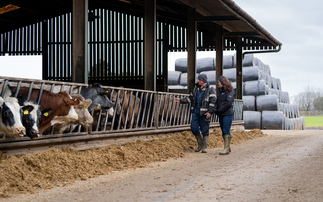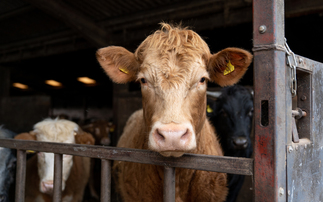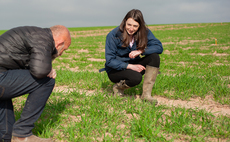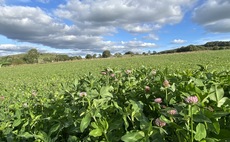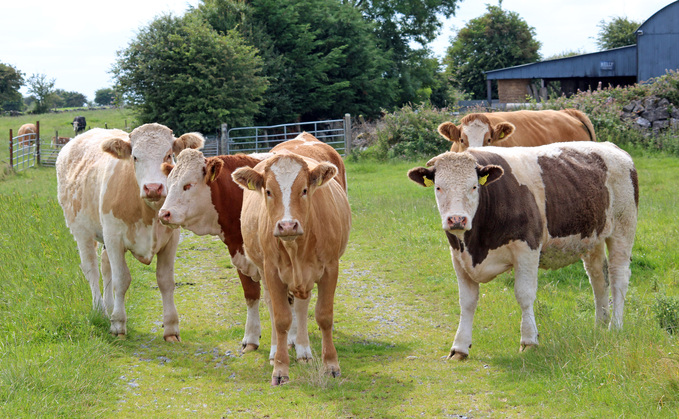
Parasites are estimated to be costing UK livestock producers about £270 million in terms of lost production and treatment costs each year, with cases in cattle making up most of this cost1'.
There are also concerns about increasing resistance to wormers, making it harder to effectively treat production limiting worm burdens.
According to Prof Eric Morgan, of the School of Biological Sciences at Queen's University Belfast, some commonly used worming strategies are now understood to be problematic.
potential for resistance. Hotter, drier summers reduce the survival of worm larvae, meaning there is little or no refugia on the pasture. This intensifies the selection pressure for resistance when animals are treated.
However, infective larvae may survive in dung pats and, if released en-masse during wet weather in late summer, can cause sudden outbreaks of parasitic disease in susceptible animals.
Resistance is defined as a faecal egg count (FEC) reduction of under 95 per cent following treatment, but the benefits of treatment on production can still be seen even with FEC reductions of only 70 and 80 per cent.
It is not until efficacy reduces to 60 or 50 per cent that a reduction in None of these methods alone will control worms to a level where they no longer cause production loss, but combined with an increase in on-farm monitoring and correct targeted use of anthelmintics when necessary, they could provide a sustainable long-term solution.
Alternatives to wormers
Despite our reliance on anthelmintics for worm control, there are alternatives emerging which can contribute to an integrated, sustainable approach in the future.
Vaccines are already available for lungworm and others are in development. However, optimising immunity to worms is just one component of an integrated strategy to control parasites in a more sustainable way. Biological control options are being developed, including fungal spores which trap and kill the worms in the dung.
These are more sensitive to environmental conditions, so sometimes they work well, but other times they will not be as effective, and there is a need for further research and development in this area.
Grazing management techniques are important and the use of mixed swards containing bioactive forage species and certain nutraceutical feed additives are being investigated. Genetic improvements, with breeding lines selecting for resistance to worm species, is also in the mix for the longer term.
None of these methods alone will control worms to a level where they no longer cause production loss, but combined with an increase in on-farm monitoring and correct targeted use of anthelmintics when necessary, they could provide a sustainable long-term solution.
Target your treatments
Using a targeted selective treatment (TST) strategy is a more sustainable method of treating worm burdens in cattle and protecting production.
It is also something which can be introduced over time, testing and refining the technique so it works for your farm.
The aim with TST is to focus treatment on animals carrying significant worm burdens, avoiding whole group treatments, while maintaining health and productivity.
This approach slows the development of resistance by allowing low numbers of worms to persist in untreated animals, so any resistant worms which survive in treated animals are diluted by this mixed population. When you are targeting animals for treatment, remember the 80:20 rule. About 20 per cent of animals carry 80 per cent of the worms, so a proportion of healthy animals in good condition can be left untreated without adverse impact on health or productivity.
FECs can be used to assess worm burdens in young animals in their first few months at pasture. This becomes a poor measure of worm burden as immunity develops, but sequential pooled FECs can still provide an indication of pasture contamination as the season progresses.
There are also indirect indicators of which animals are likely to have a high worm burden and may need treatment.
Animals failing to meet target live weight gain can be targeted for treatment and regular weighing of animals can provide broader insights into productivity.
Alongside this, general monitoring of thrive can give an early indication of parasite problems, which can then be investigated further.
Final step
Checking your wormers are working properly is the final important step. A pooled FEC taken before and after a treatment (one week after treatment with a 2-LV product, and 2 weeks after a 1-BZ or 3-ML) with an egg count reduction of less than 95 per cent may be a sign of resistance.
But it is important to remember that treatments can be ineffective for other reasons, such as incorrect dosing or administration.









